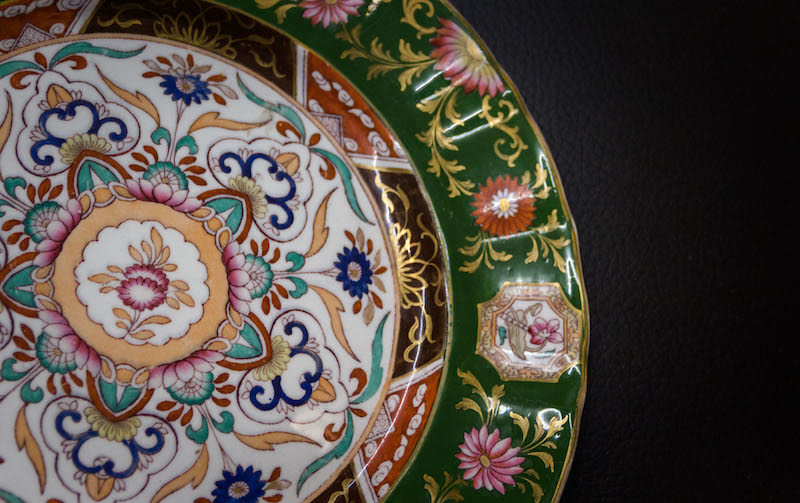Ironstone plate with colourful floral decoration, 19th Century CE
Earthenware
RL.0980
Further images
Ironstone china, also known as ironstone ware or most commonly simply ironstone, is a type of vitreous pottery first made and developed in the early 19th century by local potters...
Ironstone china, also known as ironstone ware or most commonly simply ironstone, is a type of vitreous pottery first made and developed in the early 19th century by local potters in the county of Staffordshire, England as a cheaper, mass-produced alternative for porcelain. It is often classed as earthenware although both in appearance and in properties it is much similar to fine stonewar The name derives from the notable strength and durability of objects and there is no iron involved in any of the stages in the procedure of creating this type of pottery.
The strength of the pottery enabled the company to create and produce ornamental objects of considerable size, including vestibule vases of around 1,5 m in height and mantelpieces, assembled from several large sections. Transfer-printed designs were first applied to ironstone patterns in an attempt to copy in amore affordable way Chinese porcelain. Transferware is most often in one colour against a white background, such as blue, red, green or brown. Some patterns included detail colours which were added on top of the main transfer pattern after the glaze had been applie
The strength of the pottery enabled the company to create and produce ornamental objects of considerable size, including vestibule vases of around 1,5 m in height and mantelpieces, assembled from several large sections. Transfer-printed designs were first applied to ironstone patterns in an attempt to copy in amore affordable way Chinese porcelain. Transferware is most often in one colour against a white background, such as blue, red, green or brown. Some patterns included detail colours which were added on top of the main transfer pattern after the glaze had been applie







